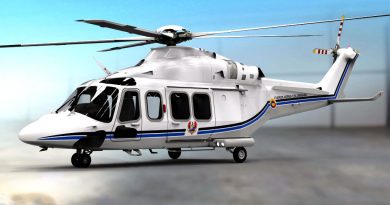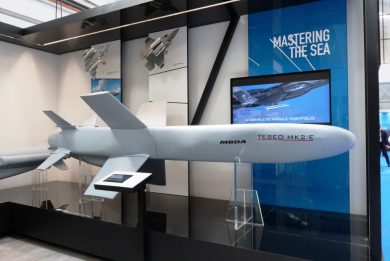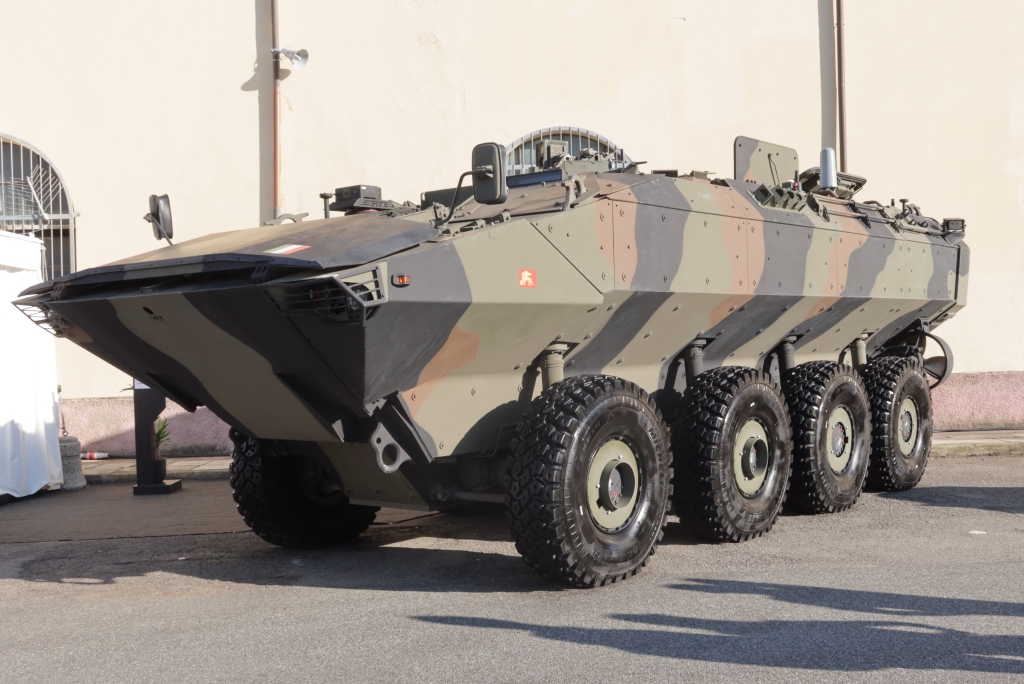
Seafuture 2025 – IDV details the Italian Navy 8×8 amphibious vehicle programme
At the exhibition in La Spezia IDV showcased for the first time the production VBA 8×8 (Veicolo Blindato Anfibio, amphibious armoured vehicle), which was first seen on June 2nd during the National Day parade in Rome.
The “San Marco” Naval Infantry Brigade, part of the Italian Navy, is about to get its first 8×8 VBAs, as the first two vehicles production vehicles have completed joint industry-military trials in December 2024, the final industrial trials being currently underway. IDV will hand over the two vehicles to the military in Q1/26 for qualification trials. It is to note that joint trials results will be considered valid for the qualification process. This should be completed in Q3/26, the two first vehicles being delivered to the customer in Q4/26.
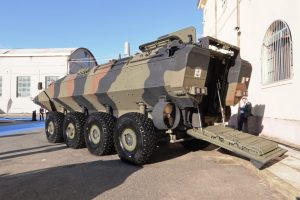
The amphibious component of the Italian Navy has been looking for years at a wheeled solution to allow high mobility and protection for the 1st “San Marco” Regiment which constitutes the Brigade amphibious assault capability; the Regiment is made of a HQ Unit, the 1st “Grado” Assault Battalion, the 2nd “Venezia” Assault Battalion, and the 3rd “Golametto” Combat Logistic Support Battalion.
Until now the main protected mobility platform in service with the “San Marco” Brigade has been the AAV7A1 tracked amphibious vehicle. In 2022 IDV received an order for 36 VBA, based on the SUPERAV platform.
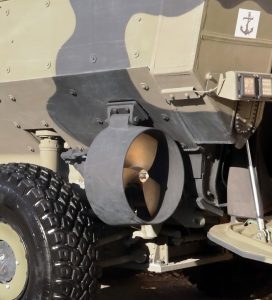
The VBA can carry a crew of tree plus 10 dismounts, internal protected volume being 18 m3.Maximum payload is 4,000 kg while empty mass is 27,500 kg, for a gross vehicle mass of 31,500 kg. The vehicle is 8.75 metres long, 3.12 metres wide and 2.79 metres high. It s powered by an Iveco FPT Cursor 16 multifuel diesel engine providing 700 hp, with a 3,000 Nm torque, coupled to an automatic transmission with power take-off with seven forward and two reverse gears. On land maximum speed is over 105 km/h, two hydraulically powered independent propellers allowing a speed in water in excess of 6 knots. The VBA is designed to perform ship-to-shore and shore-to-objective manoeuvres. It can operate with sea state beyond level 3, and when afloat a trim vane is erected and bilge pumps are activated.
On ground mobility is ensured by full independent hydro-pneumatic suspensions, while steering on the first, second and forth axles reduces the vehicle turning radius, kerb-to-kerb, at 11 metres. No detailed information are available on protection levels provided by the high-hardness monocoque steel hull fitted with add-on ballistic package and by the mine protective floor.
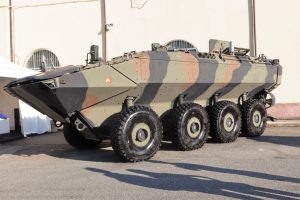
The VBA deliveries will take place over five years, all vehicles being provided in the armoured personnel carrier (APC) configuration, fitted with a Leonardo Hitrole Light remotely controlled weapon station, which can be armed with a 7.62 or 12.7 mm machine gun, or with a 40 mm automatic grenade launcher.
IDV expects a second contract for 28 more vehicles to be signed in 2026. This will include four Command Post vehicles, three of them obtained through the upgrade of three of the already delivered APCs, 18 Armoured Combat Vehicles, fitted with an unmanned turret armed with the recently developed Leonardo X-Gun firing 30×173 mm ammunition, four counter-UAS vehicles, possibly with a Leonardo provided solution, and five mortar carrier vehicles fitted with Patria’s Nemo 120 mm smoothbore turreted mortar.
Besides the Navy, also the Italian Army should soon acquire the VBA; a contract is expected in the next two years for around 80 vehicles, which will equip the 1st “Serenissima” Lagunari Regiment, the Army infantry contribution to the joint amphibious capacity, no details on how the service will split the total among the various versions being available yet. Army VBAs should be nearly identical to Navy ones.
It is to note that in a version developed together by IDV and BAE Systems, the SUPERAV has been selected and the ACV (Amphibious combat Vehicle) as it is defined by the service, is now equipping US Marine Corps units. Over 600 vehicles were ordered, an more than 300 have already been delivered in the personnel carrier, command post and fighting vehicle, with a 30 mm turret, while the USMC will soon receive a recovery version.
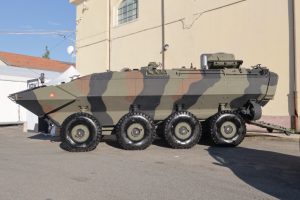
Last May at FEINDEF rumours about the acquisition of 34 were circulating, the possible contract being apparently already financed. According to information the split should see the Tercio de Armada receiving 28 personnel carriers, two command posts, two ambulances and two recovery vehicles. This would allow the Spanish Naval Infantry to have in line the same armoured wheeled vehicles of the USMC and of the Italian joint amphibious component, Spain and Italy forming together the SIAF, for Spanish–Italian Amphibious Force.
Photos by P. Valpolini

